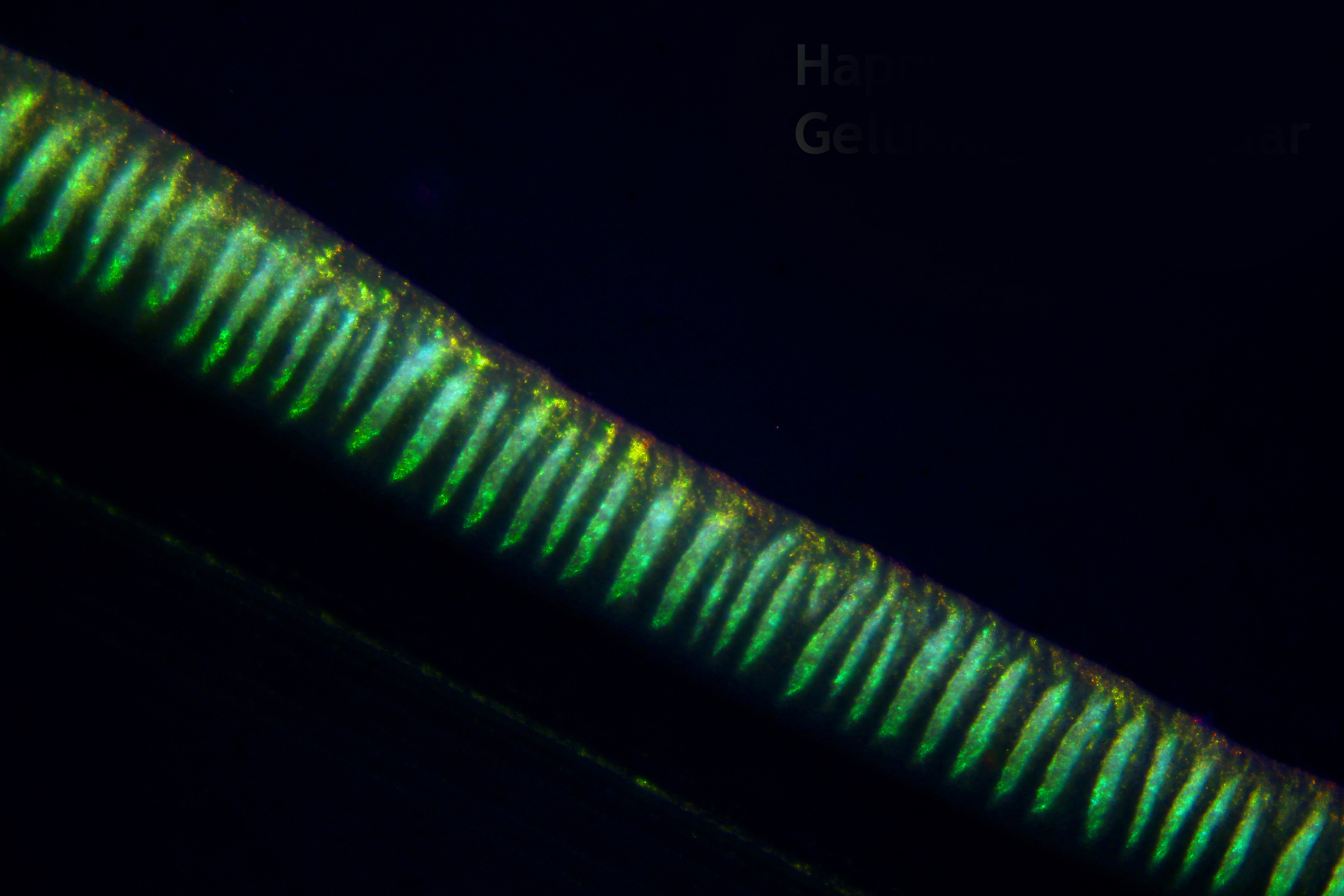Hoekmine BV, Heidelberglaan 7, Utrecht, NL.
One of the most beautiful aspects of nature is structural colour; intense angle-dependent hues displayed by many animals, plants, insects and birds - including the Peacock and the Blue Morpho butterfly. Surprisingly, despite being studied since the time of Hooke and Newton, little is known about the genes involved. Hoekmine BV, in collaboration with the Vignolini Lab in Cambridge University (UK), report the genetic and optical analysis of a bacterium showing intense colours due to the way the cells self-organize into repeating nanostructures to create a crystal. The bacterium studied is the brilliantly coloured Flavobacterium IR1 isolated from Rotterdam Harbour. The displays of colors are created by the manner in which the cells organize into repeated nanostructures – photonic crystals made from cells rather than molecules. The work, by lead authors Villads Egede Johansen and Laura Catón and co-workers, is described in the journal Proceedings National Academy of Science this week.
Hoekmine, working in the InnovationLab Life Science & Chemistry, iLab at the HU, University of Applied Sciences Utrecht, NL, was able to make mutants with altered colours which were then optically characterized at Cambridge. Colin Ingham (CEO, Hoekmine) said: “Now we begin to understand the genes involved, and how they form living structures that manipulate light, we can alter these bacteria to make new optical materials inspired by nature, in addition to understanding the role in life.” Silvia Vignolini (Group Leader, Dept. Chemistry, Cambridge) added “The bacterial system allows us to achieve tunable living structures in a way not previously achieved with applications including living biosensors.”
Contact: hoekmine@gmail.com
Photo: C. Ingham. A 5 mm long streak of Flavobacterium IR1 on an agar plate showing an
intense, green banding pattern as this living, self-organising structure catches the light. If the
observer shifted their angle the dark stripes would become light and the black areas reveal
their colour in turn.


